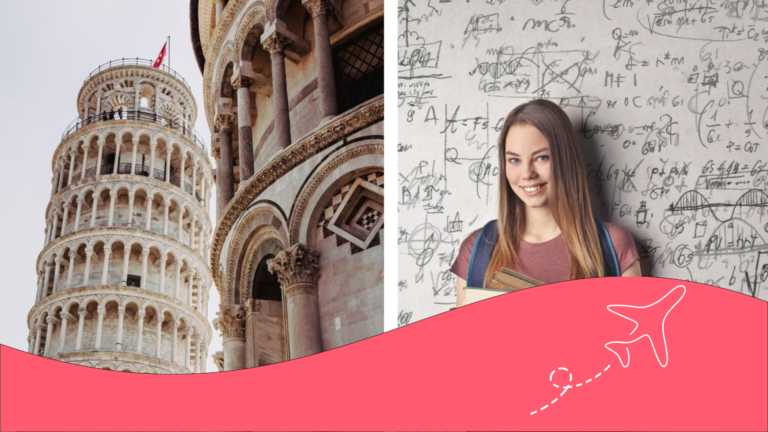Study in Italy as an international student: Learn all you need to know
Ciao! Do you want to study in cities like Rome or Florence? Find out how to study in Italy as a foreigner.
Italy isn’t just a hub for art, fashion, and cuisine—it’s also an increasingly popular destination for international students. While it may not be the first choice for studying in Europe, nearly 100,000 foreign students enrolled in Italian institutions last year. Its historic universities offer prestigious programs across a wide range of disciplines. However, getting accepted can be quite competitive. Curious about how to study in Italy as an international student?
Moving abroad to study can be a complex process, and Italy is no exception. From visas to enrollment and plenty of paperwork in between, there’s a lot to navigate. That’s why we’ve put together a guide with key details about the Italian education system and the steps to take to make the most of this incredible academic and cultural adventure. Ready to get started? Andiamo!

How does the education system work in Italy?
Italy’s education system is known for blending academic tradition with innovation, making it a top choice for thousands of international students every year. Its structured approach supports a gradual learning process, guiding students through each stage of their academic journey.
In Italy, education is mandatory from ages 6 to 16. It begins with elementary school (scuola primaria) and continues with middle school (scuola secondaria di primo grado). After that, students can choose to attend high school, where they can specialize in areas such as humanities, sciences, arts, or technology.
At the university level, bachelor’s degrees (laurea triennale) typically take three years to complete. Master’s programs (laurea magistrale) usually add another two years of study. Italy also offers prestigious Ph.D. programs (dottorato di ricerca), which last between three and four years and are perfect for those looking to specialize in academia or research.
One of the standout features of Italy’s education system is its deep connection to the country’s rich cultural heritage. Many universities are located in historic cities, offering students a unique blend of academic learning and cultural immersion. Plus, as part of the European Higher Education Area (Bologna Process), Italy facilitates the homologation of degrees and academic exchange within Europe.
Requirements to study in Italy as a foreigner
Studying in Italy is more than just attending a top university—it’s an opportunity to experience a culture rich in art, history, and creativity firsthand. However, getting in isn’t always easy. There are several requirements to meet before you can enroll, and competition can be tough. Let’s take a look at what it takes to secure a spot:
- Acceptance letter: You must have a letter of admission from an Italian university validating your enrollment in the chosen program.
- Student visa: Required for stays longer than 90 days. Italian study visas (Type D) require documents such as a letter of admission, proof of financial support and medical insurance.
- Language certificate: Prove your proficiency in the language of instruction. Many Italian universities accept the CILS or CELI for Italian and the TOEFL or IELTS for English programs.
- Academic documents: Certificates of previous studies translated into Italian and apostilled, along with their homologation if required.
- Financial solvency: Proof that you are able to cover your expenses during your stay in Italy, including tuition, accommodation and living expenses.
- Health insurance: This international health insurance should cover emergencies and hospitalization during your stay in the country.
- Payment of university fees: Each university establishes its own registration fees, which may vary according to the level of studies and the program.
- Passport photos: Required for visa and enrollment procedures.
- Pre-enrollment form: In some cases, Italian universities require the completion of a pre-enrollment form through the Italian embassy in your country.
Be aware that the requirements may differ depending on your program and the university you apply to. It’s a good idea to check the official university website or contact an Italian consulate for the latest details.

Steps to study in Italy as a foreigner
Now that you have a better understanding of the Italian education system and the requirements for starting your academic journey, it’s time to plan the steps that will get you closer to your goal. The process can feel overwhelming, especially with a new language, culture, and unfamiliar regulations. But don’t worry—we’ve put together a simple and practical roadmap to make things easier for you.
1. Evaluate universities and courses in Italy
Before you make any decisions, take the time to research the universities and programs in Italy. The country is home to prestigious institutions like the University of Bologna, the world’s oldest university, and Bocconi University, a leader in business and economics. Look at international rankings, explore the universities’ official websites, and check out forums or social media where current students share their insights.
Take note of important factors such as the language of the program, admission requirements, tuition costs, and the career opportunities each option provides. Doing this will help you find the program and university that best match your academic and personal goals.
2. Review financing options for studies in Italy
Italy offers a variety of options to help finance your studies, including government scholarships and university-specific grants. For example, the “Invest Your Talent in Italy” program is one of the most popular scholarships among international students. Additionally, institutions like the University of Padua and the Polytechnic University of Milan also offer excellence-based scholarships.
If you’re not eligible for a scholarship, look into alternatives like student loans, personal savings, or part-time work, which are common for international students in Italy. By organizing your finances in advance, you’ll be able to focus on your studies without worrying about money.
3. Apply to a study program in Italy
Once you’ve decided on the university and program you want to pursue, it’s time to start the application process. This usually involves submitting documents like academic transcripts, a personal statement, an updated CV, and sometimes a portfolio, depending on the program. Keep in mind that some Italian universities may also require language certificates, such as IELTS or CILS, to prove your proficiency in English or Italian.
It’s important to check each university’s deadlines and submit a strong application that highlights your achievements and academic goals. If you’re unsure about any requirements, don’t hesitate to reach out to the admissions office of your chosen university.
4. Apply for a visa to study in Italy
If you’re from a non-EU country, you’ll need a student visa to study and live in Italy. The application process requires documents like your admission letter, proof of financial stability, valid international health insurance, and a detailed study plan.
The application process can take several weeks, so make sure to start well in advance. Check the specific requirements at the Italian embassy or consulate in your country and gather all the necessary documents to avoid any delays.
5. Moving to Italy
Time to pack your bags and kick off this exciting new adventure! Be sure to plan ahead by exploring accommodation options like student housing, shared apartments, or private rentals. Websites like Uniplaces or Spotahome are great tools for finding trustworthy places to stay.
Besides sorting out your accommodation, make sure to take care of other important tasks, like opening a bank account with one of the best banks for internationals in Italy, registering for healthcare, and learning how the local public transport works. Arriving prepared will help you adjust faster and set you up for a smooth start in Italy.
How much does it cost to study in Italy as a foreigner?
Before you dive into the enrollment process, there’s something else we need to discuss: the cost of studying in Italy. It’s important to have a rough idea of your expenses to avoid any surprises later on. Of course, costs will vary depending on the city, the type of university, and your lifestyle, but here are some things to keep in mind:

Student housing
Accommodation is one of the biggest expenses for international students. In larger cities like Milan or Rome, renting a room in a shared apartment can cost anywhere from 400 to 800 euros a month ($432-864). In smaller cities like Bologna or Pisa, prices tend to be more affordable, starting around 300 euros a month ($324). University dorms, though less common, typically charge between 250 and 500 euros per month ($270-540).
Food and transport
Italian food is famous for being both delicious and, luckily, student-friendly. If you cook at home, you’ll spend around 150 to 250 euros a month ($162-270) on basic groceries. Eating out at trattorias or budget restaurants will usually cost between 10 and 15 euros per meal ($10.8-16.2).
Public transportation in Italy’s major cities is reliable, and there are monthly passes available for students. These typically range from 25 to 50 euros a month ($27-54), depending on the region.
University tuition
Compared to other European countries, universities in Italy are quite affordable. Tuition fees for international students at public institutions range from 850 to 2,000 euros per year ($918-2,160). At private universities, these costs can exceed 5,000 euros annually ($5,400), depending on the program and institution. Master’s and postgraduate courses are generally more expensive, with fees ranging from 2,500 to 6,000 euros per year ($2,700-6,480).
Other expenses
Be sure to include other expenses in your budget, such as academic materials, which can be around 50 euros a month ($54), and entertainment, which will vary based on your personal preferences. Also, as we mentioned before, international health insurance is required. The cost for this typically ranges from 50 to 150 euros a month ($54-162).
When and how to homologate degrees and courses in Italy?
Having your academic qualifications recognized is an important step if you plan to continue your studies or work in Italy. This process ensures that the qualifications you earned abroad are officially acknowledged within the Italian education system, opening up new academic and career opportunities for you.
When is homologation required?
Homologation of diplomas in Italy is necessary in two main situations:
- University access: If you plan to pursue a bachelor’s, master’s, or Ph.D., you’ll need to have your previous studies recognized as equivalent by Italian institutions. This is essential to meet the admission requirements.
- Regulated professions: If you want to work in fields like medicine, architecture, or law, you must have your qualifications recognized. These professions require that your credentials meet Italian standards.
How to homologate degrees and courses in Italy?
- Gather the required documentation: You’ll need your original academic certificate, transcript, and a description of the education system in your country. Everything must be translated into Italian by a sworn translator and legalized with the Hague Apostille or through the Italian consulate.
- Send the application: The recognition applications are processed through the Ministry of Education, Universities, and Research (MIUR) or directly at the universities, depending on the situation. It’s important to follow the specific instructions provided by each institution.
- Pay the administrative fees: Cost varies according to the type of degree and academic level. It is crucial to confirm updated fees before applying.
- Submit the application: You can complete the procedure online through the official MIUR portal or go in person to the corresponding offices in Italy.
- Follow-up of the procedure: Once filed, homologation can take between three and six months. In more complex cases, this period may be extended.
If you don’t need full recognition, you can apply for an equivalence certificate. This document is easier to obtain and may be enough to continue specific studies or access academic programs that aren’t regulated in Italy.
Study online in Italy as a foreigner
Are you interested in studying in Italy but can’t relocate? Online education is a great option to experience the best of the Italian education system without the need to move. In recent years, Italy has expanded its range of digital programs, blending academic tradition with modern technological tools.

Public and private universities
Institutions like the Università Telematica Internazionale Uninettuno and the Università degli Studi di Roma offer bachelor’s, master’s, and specialized courses online. These universities are designed to provide flexibility without compromising on academic quality.
International educational platforms
Italian universities like Bocconi have also launched online programs in fields like business and economics. These platforms typically combine interactive content with live sessions and access to expert tutors.
Certificates and specialization courses
If you’re looking for more hands-on training, many Italian universities and platforms like edX offer programs in areas like fashion, design, gastronomy, and technology. These certificates are perfect for those who want to gain specific skills without committing to a full degree.
Enrolling in an online program is easy: just find the one that best suits your goals, check the requirements, and fill out the registration form. You may need to provide documents like translated academic certificates and proof of language proficiency. Once you’re enrolled, you’ll have access to the virtual campus where you can find your study materials and engage with professors and classmates. To make sure you can study without interruptions and meet your commitments, Connect Holafly’s global internet plans will keep you connected whenever you need it.
Frequently asked questions about studying abroad in Italy
To study in Italy, you’ll need to meet certain requirements, such as securing an admission letter from a university, applying for a student visa, proving financial stability, and having valid international health insurance. If required, you may also need to get your academic qualifications officially recognized.
Not always! Many universities in Italy have programs in English, especially for master’s degrees. However, knowing Italian can be a huge plus for Italian-taught degrees or to better integrate into local life.
The cost will depend on the university and program. On average, tuition fees at public universities range from 1,000 to 4,000 euros ($1,080-4,320) per year, while private institutions can exceed 10,000 euros ($10,800). Additionally, you’ll need to factor in expenses for housing, transportation, and daily living.
Italy offers a range of scholarships, including government grants for international students, regional funding, and private institution awards. These scholarships can help cover tuition fees, housing, and living expenses, either partially or in full.
Yes, if you’re pursuing an undergraduate degree or a regulated profession, you’ll need to validate your qualifications. For master’s programs or specialized courses, it’s usually not mandatory, but some universities may require proof of equivalency.
Yes, but there are restrictions. With a student visa, you can work up to 20 hours per week during the academic term and up to 40 hours during holidays. This can be a great way to earn extra income while studying.









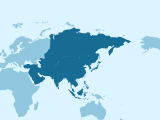




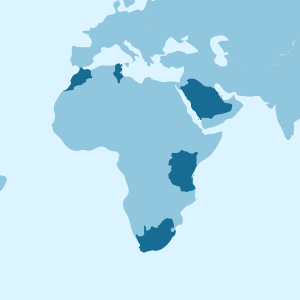



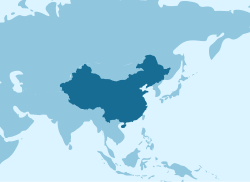



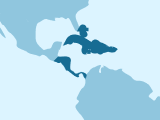
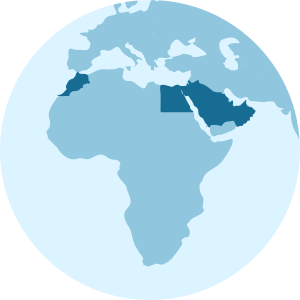
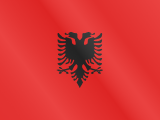

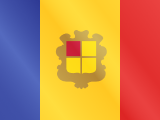
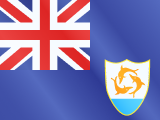



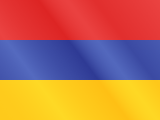






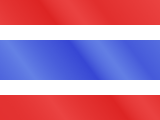







 Pay
Pay  Language
Language  Currency
Currency 


















 No results found
No results found






